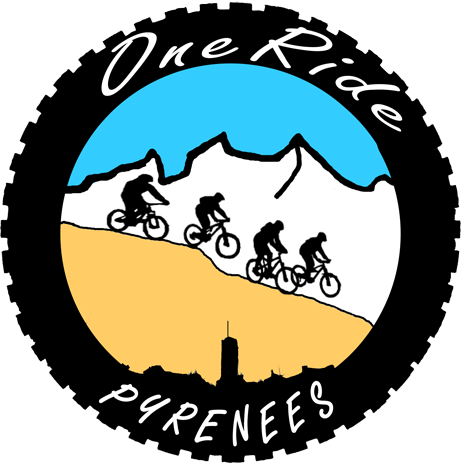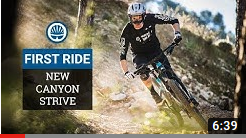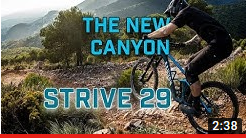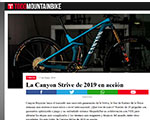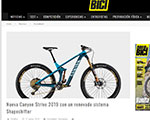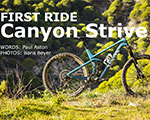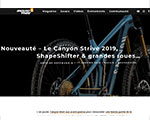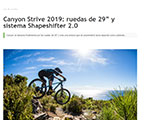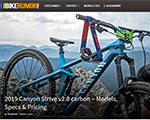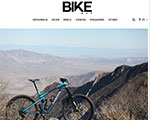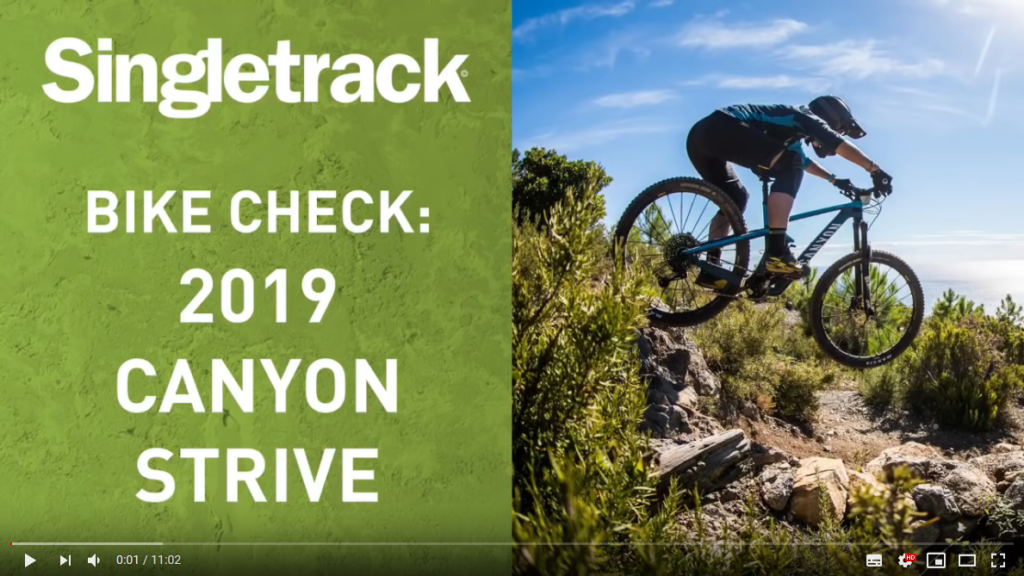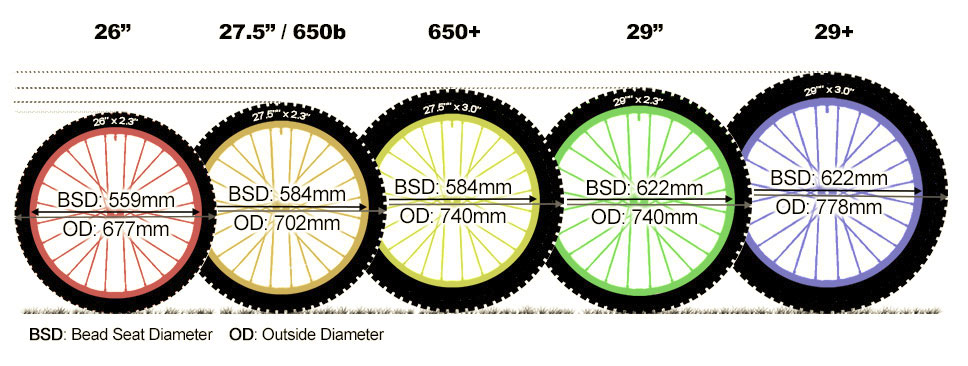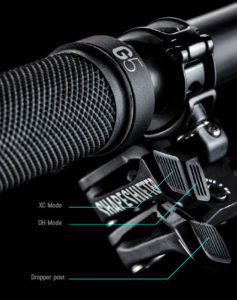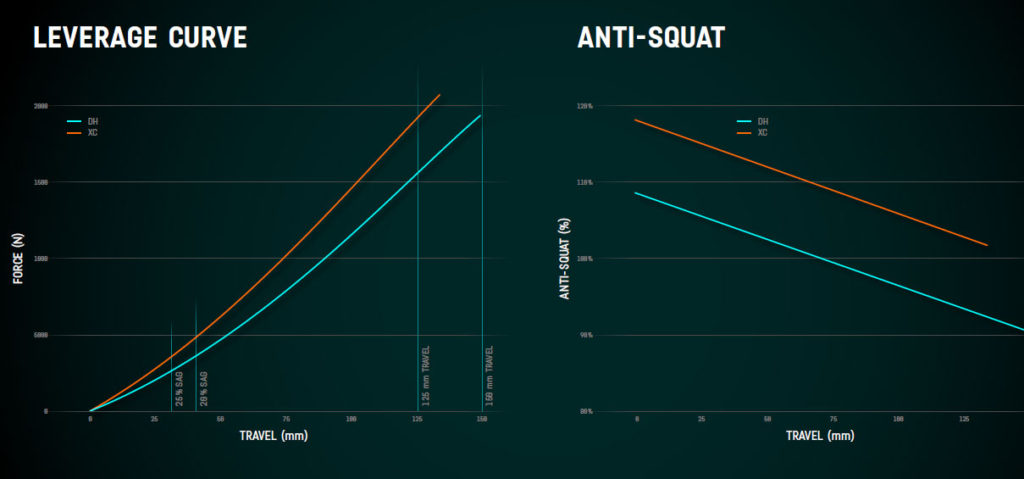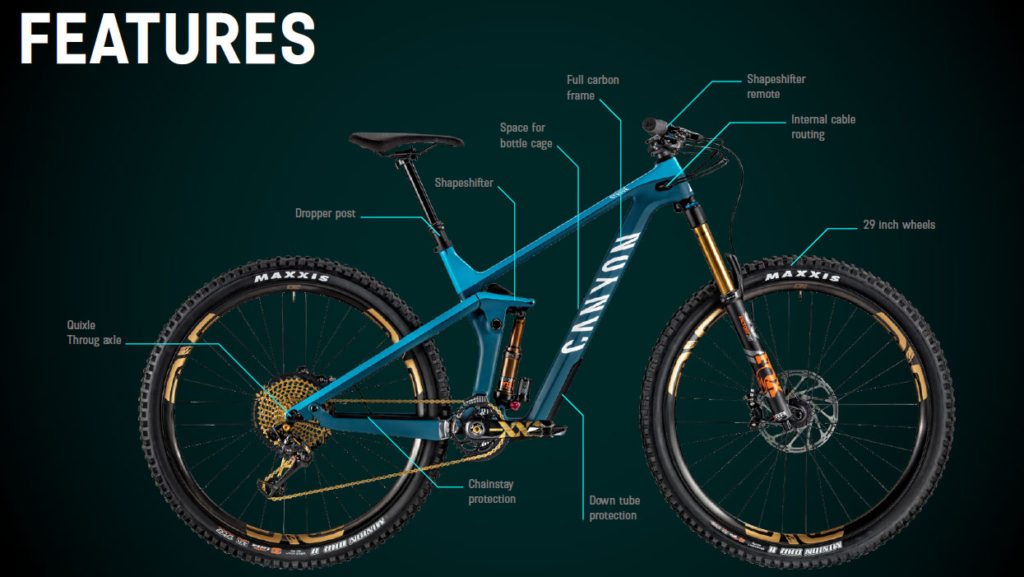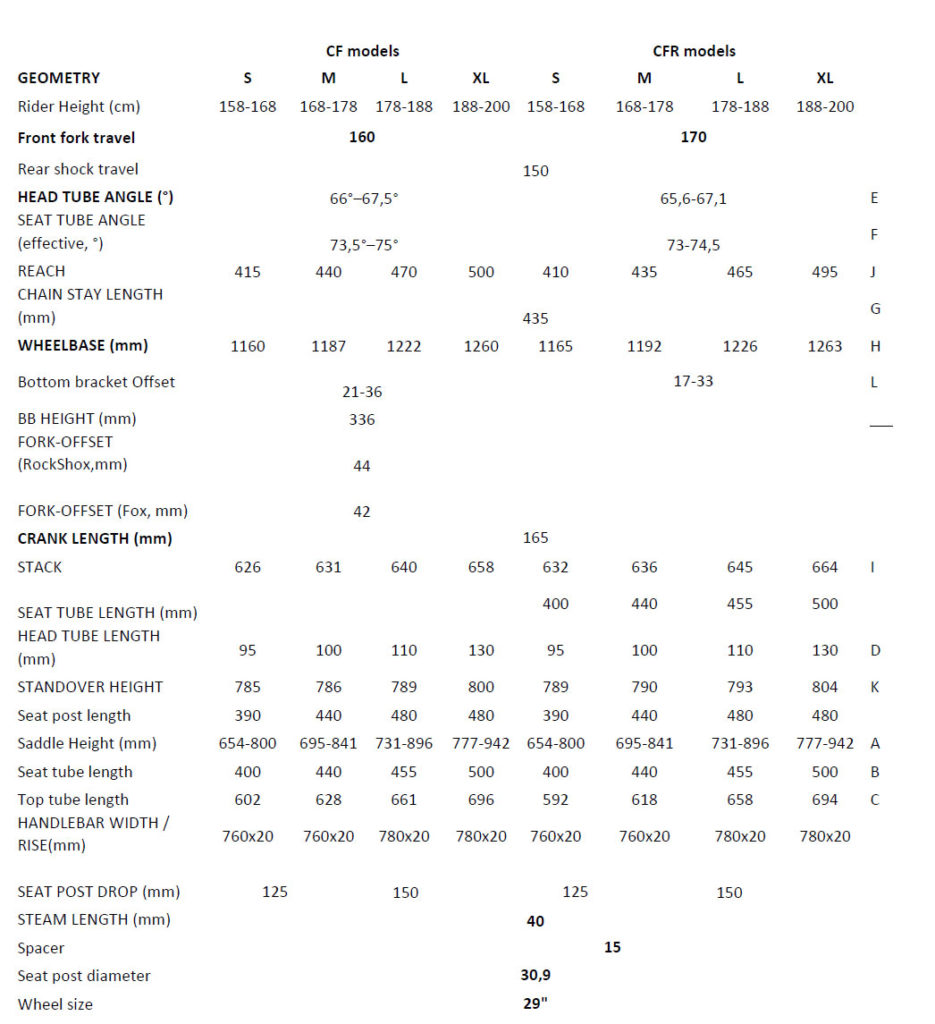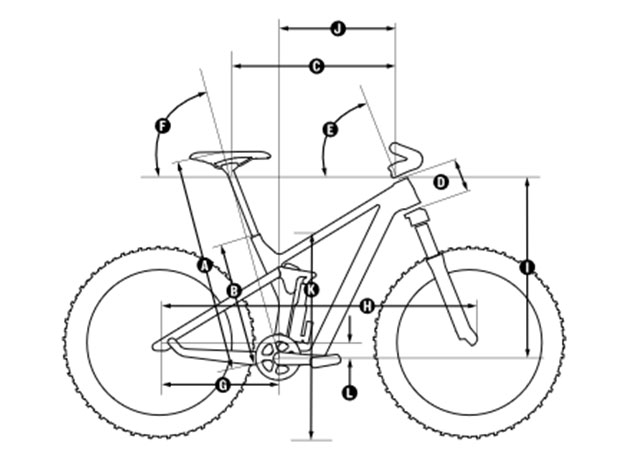Ready for strivinging Ainsa.
ALL YOU NEED TO KNOW ABOUT THE NEWEST BIKE FROM CANYON. A REVIEW COMPILATION.
INTRODUCTION
As a MTB guide in Ainsa, I’m constantly regarding the new bikes coming to the market. Unavoidably, I figure out what those bikes can offer for riding here. Many MTB manufacturers had added a long travel 29er to their line-up in the last year. With the New Year and the upcoming season, it’s time for a new release from Canyon.
The “Strive” has a long list of victories to its name, including wins on the Enduro World Series circuit. After 3 years without a major change, Canyon has now created the new race weapon for the Canyon Factory Enduro Team. IT s a bike that is absolutely made for racers!
But the Strive is also made for those who want to go hard & fast out on the trails – and coming from a “direct-to-consumer” manufacturer, you can expect a high quality ready to shred bike, but at a reasonable price.
Running 29” wheels and fitted with the new “Shapeshifter” system, the Strive looks like the most saving energy bike for the long technical climbs around Ainsa, our playground. And a bike how become a racehorse to enjoy the Enduro World Series 2015 and 2018 Stages.
I wasn’t in Málaga for the new “Strive” presentation with Fabien Barrel. I wasn’t even at Canyon HQ in Koblenz, Germany. Unfortunately, Canyon forgot to send me a test bike – that would have been ideal.
but…
After studying more than 20 reports on this particular bike, written by 15 different journalists from 5 different countries and in 4 different languages – in both written & video format – I felt that although each one of them had something important to say, no single one of them told the whole story.
Now, from a totally independent point of view, I am writing this compilation article comprising of all the available pieces of information, the Pros and remarkably the Cons, that all these people have written about the new Strive.
In addition, my personal contribution includes:
- Some particular points relating to riding this bike on the Zona Zero trails in Ainsa.
- An easy to understand presentation, including notes clarifying some of the technical aspects of the bike.
What you think? Is that easy to understand? Let me know in the comments below.
THE BIKE
Modern bikes are more versatile than ever before and yet they haven’t lost their “character”. As a result of ongoing development by manufacturers, there are now a huge selection of bikes available to suit every type of rider and it has become increasingly difficult for a potential buyer to find their “ideal bike” in a fast-expanding market. That’s exactly why we all need honest, unbiased test reports that help us understand which bike really suits our needs and meets our expectations
https://design-innovation-award.com/our-mission/.
Desing & Innovation Award 2019
In Canyon line up, the Strive falls between the 180 mm travel “Torque”, their Freeride platform; and the All Mountain “Spectral”, with its 150 mm rear travel. Both bikes were updated last year with notably Market success. In the case of the “Strive” instead of making similar small changes, Canyon surprised us with a completely different machine
WHEEL SIZE
Firstly, the “Strive” wears big wheels. 29” wheels tend to be faster for racing. They carry speed better, they have more grip and they give the rider more confidence. They do require a slight change in riding style – for instance anticipating the turns and the twisty terrain a little bit. But we see more and more Enduro World Series top riders changing to “big wheels”… And no one is back to 27.5”.
The same thing applies on the trails – every season we see more people happy ridin large rims. At Canyon, when they were projecting the new Strive, big wheels was their starting point.
Let’s talk a little bit about wheel sizes
After a quick bit of research on the pros and cons regarding 29” wheels – it would appear be clear that the “big wheels” ride better in most types of terrain…but the differences are not as great as you might think. Apparently the advantages are more about rider perceptive than anything. See for instance what they said at Bike Radar for this, back in 2015.
Anyway the riders perpective is getting stronger…
Like many riders, I suspected that the new tendency regarding wheel size was more a marketing ploy than anything else, but looking back in history and the evolution of the bicycle wheel, the reality is not as simple as that.
According to the MTB pioneer Gary Fisher, the 29er and even the 27,5” where considered from the very beginning. The limiting factor was the question of tyre availability & cost and so, purely for convenience reasons, the industry chose to develop the first MTB’s with 26” wheels – with which they had remarkable success until recent years.
The origin of these early 26” wheel bikes can be found with the childrens bikes developed after WWII.
In my opinion, 29″ wheels are nowadays the tre
Understanding Basic Mountain Bike Numbers
| DH general Geometry | XC general geometry |
|---|---|
| 63º HA | +69º HA |
| 63º SA | 74º SA |
| 200 mm of travel front and rear | 100 mm of travel front; 100mm to no travel rear |
| BB 330-350 | BB 300-320mm |
They are to main forces affecting the movement of the bike.Human effort, namely pedalling.The Force of Gravity.When racing XC (Cross Country), you can spend most of your time pedalling up hill. In DH (Down Hill) racing it is possible to finish a race or stage without a chain – descending purely with the aid of gravity. Bearing that in mind it is easy to understand how DH bikes have become so different to XC bike.
Racing Enduro you need the best of both worlds. Maximum gravity control for the steepest descents of the trail and maximum pedal efficiency for the flat or uphill sections. And don’t forget the sometimes quite long “pedalling linkages” between Stages. These are the reasons why Enduro bikes fall between the two categories, XC and DH.
The question is, where exactly? Favouring the shape of the DH bike or closer to the shape of a XC bike?
There is a wide choice of bikes available on the market that fall between the two categories. A few manufacturers have tried to capture the whole range, making bikes that are able to shift between the two modes. Bikes with:
- Good Pedal efficient – XC oriented.
- Good Suspension – DH orientated.
The “Ranson “ by Scott, The “Jekyll” by Cannondale and the new Canyon “Strive” are examples of bikes that fall into this category.
The SHAPESHIFTER: When a small change makes a big difference!
Without any doubt, the most distinctive feature of the Strive is the “Shapeshifter”. There is no other bike, including those available from Canyon, that has this sort of system. The only thing similar to the Shapeshifter can be found on bikes from Bionicon, who simultaneously extend their rear shock and compress their forks at the push of a button for better climbing and then change back again for descending.
What is it?
The keystone on the bikes suspension system is the Rocker Link, a small linkage connecting the rear triangle of the bike to the Shock. A minimal change here can critically affect the whole suspension of the bike. For example, the little “Flip-Chip” for changing geometries or wheel sizes in bikes like the 29” YT “Capra”, or the Scott “Ransom” are to be found on the Rocker Link.
The evolution of some bike models or the geometric changes between two different purpose bikes often start in this linkage too.
The “Shapeshifter” is an extra link connected between the Rocker and an Air Piston. With just a touch of the button the piston is activated which in turn moves the small additional link, making a change to the suspension system “On-the-fly”. In this way, say Canyon, the “Strive” is actually two bikes in one. A single bike that can take on two different shapes at the push of a button when the rider desirers:
One “Click” and you can switch to pedalling efficiency. One “Clack” back and you return to increased bike control when the going gets rough and tough.
This is a mechanical add-on though. It is not related in any way to the internal of the shock.
The OLD version
The original version first came onto the scene back in 2016, after a year of field testing during the EWS season.
The mechanism was able to change the suspension on the fly. Rear Travel from 160mm to 130mm, 30% to 15% of SAG and 19mm of BB height
However, the system did throw up a few problems:
- Actuation: The system was difficult to activate. It was a little bit like a dropper post – you needed to push the lever on the handlebar and while keeping your finger pushing the lever shift your body:
- Forward and unweighting the rear wheel – by flicking up with your heels – to change into XC mode and
- Backward, keeping the legs straight and then pushing through your heels – for going into DH mode.
These “how to use” actions earned the nickname “The Canyon Boogie” from some journalists and it could be tricky, to say the least, to accomplish during a race run! And that wasn’t all
- The system could stop anywhere between the two modes! Definitely not for the novice.
- Reliability: Some riders suffered system failures, especially on the early production models.
- Repairs and Maintenance – could only be carried out by Canyon.
The new 2.0 version
At Canyon they still thrusting the Shapeshifter will make the Strive in the marketplace. So, instead forget about it, they are coming back with the same concept, but in much more refined version. More simplistic.
For the second version Canyon had taken all these experiences and worked hard to avoid any mistake.
New manufacter
It has been developed in collaboration with Fox and this expert in telescopic mechanisms. Both, reliability and maintenance issues should be out.
The new shapeshifter can be revised or maintained by any Fox service, or send it to Canyon. If anything broke out of warranty, the most of the parts will cost would be less than 100€.
But the big changes are internal:
- Pressure reduction in the air chamber
- Oil and air are never in close proximity at high pressure.
- New low friction and better piston seals.
- Non-return valve for improve the changing mode process.
- New integrated design for cable routing and air spring, keeping dirt out.
- Position of the air valve more accessible.
- Service intervals lengthened.
The new shifter
The answer to the difficulties of actuation is a new shifter: much more intuitive and simplistic.
Under the left hand of the bars there’s a two-button thumb trigger. Pushing the upper “Click” button you go for the shorter-travel mode. Pushing down the “Clack” button, you go for the longer travel-mode. There’s no need of keep pushing your finger for changing mode. Instead, the system will change automatically in the next opportunity. For example:
- Unweighting for XC
- First bump for DH.
For the additional lever, Canyon have come up with one of the best solutions seen to date: The Reberb post lever can be mounted stacked below the Shapeshifter on the left hand side. There’s no need to use an additional cockpit disturbing clamp. But for those having a cable actuated post, the solution is even better. Canyon provides its own lever, able to deal with cable heads on either side, post or remote side.
What it does?
In number the Shapeshifter do a big change.
- Suspension:
- leverage ratio: more progessive in XC mode.
- anti-squat increases by 10% to approximately 118%. The reduced anti-squat in downhill mode reduces pedal kickback, making a more active suspension.
- Rear wheel travel: from 150 to 135 mm and firm up suspension.
- Geometry changes:
- head angle 66º to 67,5º;
- seat tube angle: 73,5º to 75º
- BB height 15mm of elevation change.
And all this change is doing mechanically. There’s no need of a proprietary shock. Meaning two things:
- The bike can use any shock on the market, including coil sprung shock. You only need to carry on the shock length.
- Like in almost any other bike, you can improve the behaviour of the shock with the red and blue classic levers.
BUILD
The Strive is sale in full carbon frame only. Up to 6 different models, in round prices from 3K to 7000€. For this model, there’s no alloy versions. Apparently is a question of weight. The extra grams coming from the Shapeshifter would make one aluminium version heavier than most of the bikes of this category. In any case, the entry level Strive CF 5.0 is one of the cheapest Enduro bike with a carbon frame on the market.
The top two models are build around a lighter carbon frame, named CFR with a racing R. It’s a higher quality frame made in a more sophisticated process. Using different type of carbon fibres, combined with the resin in a more effective way. The carbon fibres directions and the different sheet of carbon are also playing a important role. Canyon claims saving 300gr in final frame, keeping the same stiffness.
There’s a CFR frame only option for those who want build up his own bike. Including shiny Kasima coat in shock and seatpost cost 2.999€
See all the details and prices in € – Euros, £ – Pounds or $ – US Dollar.
- Is available in sizes small to XL, with reach measurements from 415mm in S to 500mm in XL. It should fit most riders. The head tube length also grows from 90mm to 130mm in the range of sizes, keeping the handlebars in a similar position for every body.
- Cables are routed internally through foam sleeves.
- Threaded BSA BB’s
- The new Strive wear a classic Horst-link layout just like the previous generation.
- Downtube protector and a chain slap guard.
- Full-size water bottle inside the frame
- The rear axle features a little lever that slides into the axle inner, for less risk of hanging up
GEOMETRY
Here you can see the most relevant numbers of the 2019 Strive. In the chart below you can see the numer most accurate we haver reworked after canyon informations.
Hard to be precissed in the numbers. The geomitrty chart of the strive range is a bit complex. Complexity of Shapeshifter and diferent fork lengs.but differents plublication in canyon website, pdf¡s also been modificated and the geometry especification on every model.
Wheelsbase, fork offset controversis in bb heifht angles dinamic static.
Intro the 170mm fork changes 0,5º for the CFR versions.
Not very often you.
As a result of shapershifter, some angles of the bikes changes beteeen modes.
Compared to his competiros the Strive is allitle bit conservative in numbers.
Riding the 2019 Strive.
Shapeshifter in action
Nothing better than a real test for kowing how effective the shapeshifter is.
Coming to Ainsa?
Coming here with your new Strive would be a good choice, sure. If your plans are more ambitious that just having fun, we’ll encourage you to put stronger tyres on. Whenever you find DH casing, Double Down or any other, they should be heavy. Lighter tyres, like Canyon specs in the new Strive, can be a good choice in many places…. but not here. Rocks are too sharp for those thin casing tyres. Same that in Malaga, where they experiment a number of flat during Strive’s presentation.
